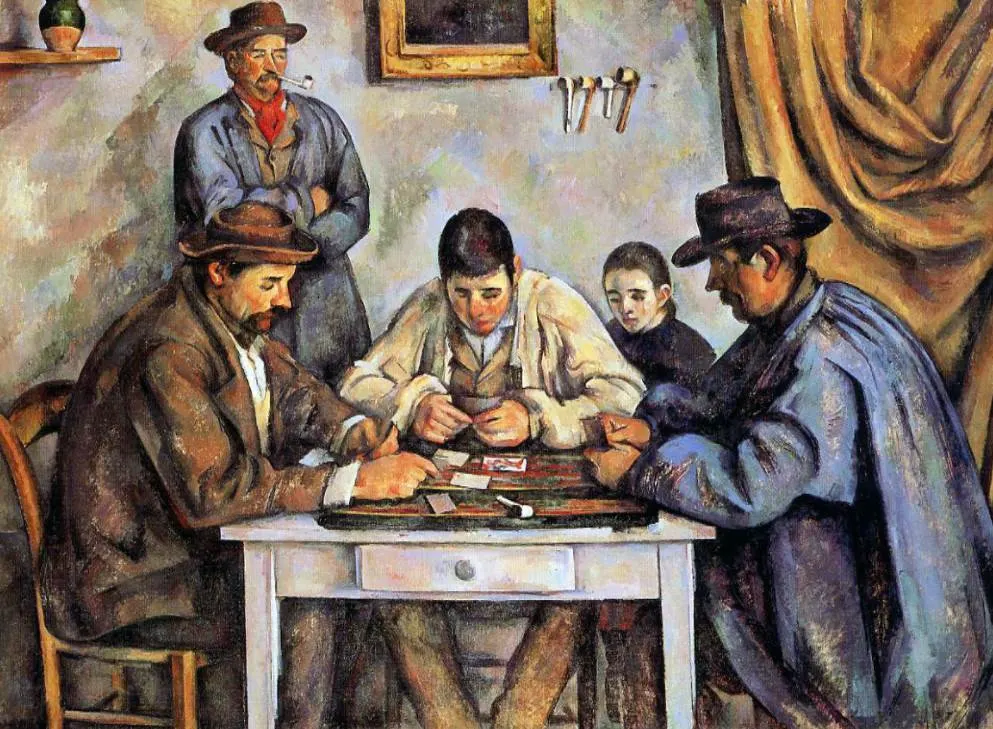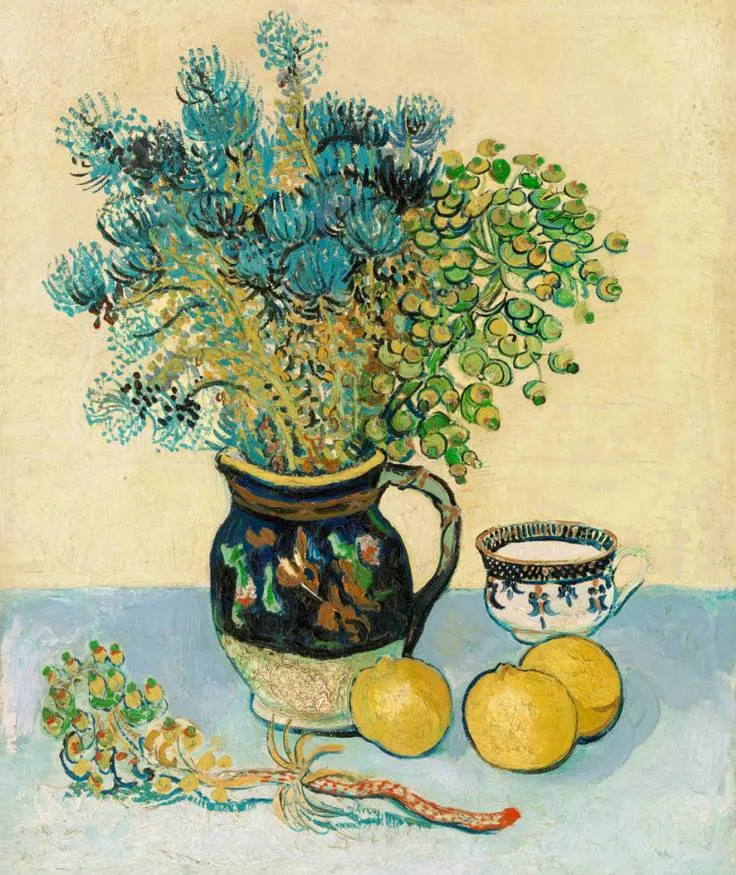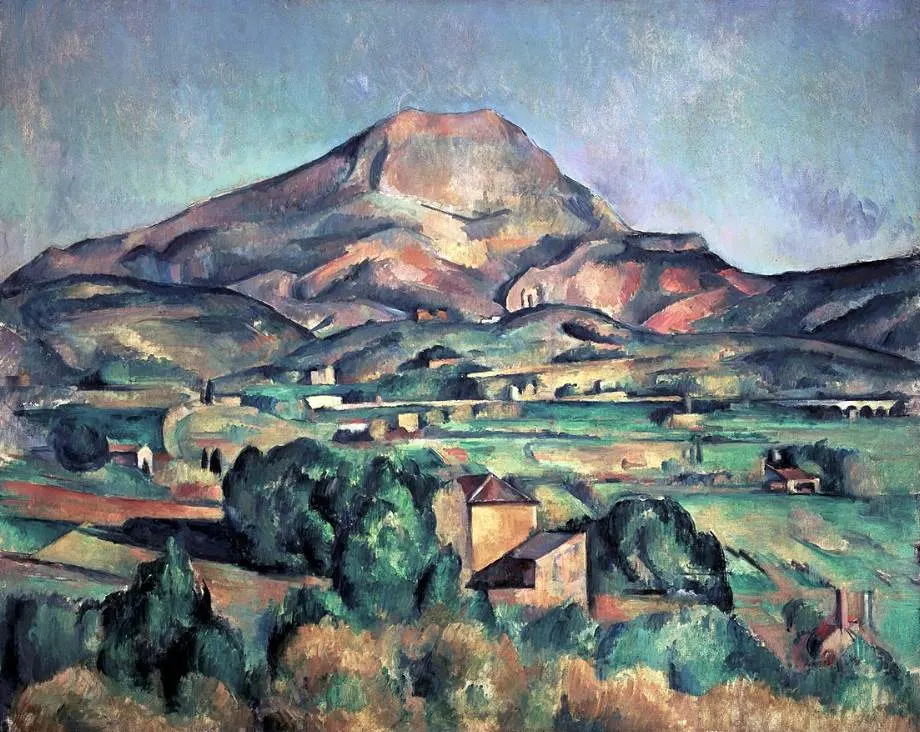The Barnes Foundation is a combination of an art museum in Philadelphia and an institution dedicated to horticulture.
It was founded by Albert C. Barnes (1872-1951), an American businessman and avid art collector who amassed a great collection of art from the 19th and 20th centuries.
He started acquiring artworks in the early 20th century and he acquired dozens of Impressionist, Post-Impressionist, and modern paintings for multiple decades.
The Barnes collection was initially housed in a museum in Merion but it moved to a building on Benjamin Franklin Parkway.
This is not too far southeast of the Philadelphia Museum of Art, the most famous museum in the city, and the Rodin Museum, a museum dedicated to the works of Auguste Rodin (1840-1917).
The museum is home to over 4,000 objects, including over 900 paintings. In this article, you’ll discover some of the most famous paintings at the Barnes Foundation.
1. Le Bonheur de Vivre – Henri Matisse
- Date created: 1905-1906
- Dimensions: 176.5 × 240.7 centimeters (69.5 × 94.75 inches)
Le Bonheur de Vivre is a painting by Matisse that revolutionized the world of art in the early 20th century. Henri Matisse (1869-1954) was one of the leading figures of the Fauves, a group of artists who used distinctive bright colors and therefore changed the course of art history.
This painting depicts several people who are having a great time in a landscape that overflows with vivid colors. The work was certainly not appreciated for what it was upon completion and was even ridiculed. Today, it’s considered to be one of the pillars of modern art.

2. The Card Players – Paul Cézanne
- Date created: 1890-1892
- Dimensions: 134.6 x 180.3 centimeters (53 × 71 inches)
The Card Players is a painting by Cézanne, an influential French artist. It’s one of the five paintings in a series of works on the same subject. The painting in the collection of the Barnes Foundation is the largest in this series and features the most figures as well.

It’s uncertain whether Paul Cézanne (1839-1906) started this series of paintings with the largest and scaled it down to he started smaller and added more figures in the process. It remains one of the most famous series of paintings in the artist’s oeuvre.

3. Models – Georges Seurat
- Date created: 1886
- Dimensions: 200 × 249.9 centimeters (79 x 98.4 inches)
Models is one of the only 7 major paintings by Georges Seurat (1859-1891), the Post-Impressionist artist who passed away at the young age of 31. It was a reactionary painting to his famous “A Sunday Afternoon on the Island of La Grande Jatte” (1884-1886).
Seurat was the man who perfected the pointillist technique, a method in which the artist applies small dots to produce larger fields. The artist produced this particular painting because his technique was criticized for being unable to depict real life.

4. The Studio Boat – Claude Monet
- Date created: 1876
- Dimensions: 72.7 × 60 centimeters (28.6 x 24 inches)
The Studio Boat is a painting by Monet, a man who is considered to be the founding father of the Impressionist art movement. Claude Monet (1840-1926) bought this boat featuring a wooden cabin shortly after he moved to Argenteuil in the early 1870s.
The main purpose of the boat was to be able to reach areas that he otherwise couldn’t paint. The cabin was just large enough to sit down and set up his easel. Because of this boat, he managed to paint several works depicting sailing boats in the area near his house.

5. Still Life – Vincent van Gogh
- Date created: 1888
- Dimensions: 55 x 46 centimeters (21.6 x 18.1 inches)
Still Life is a painting by van Gogh and one of the many depicting flowers. It was produced in 1888 during a time that he lived in Arles, a small town in the southern part of France. This was shortly before the mental breakdown that he suffered during the visit of Paul Gauguin in late-1888.
This particular work was produced around the same time that Vincent van Gogh (1853-1890) completed several paintings in his famous Sunflowers series. All of these paintings were intended to decorate the Yellow House in which he lived at the time.

6. Bois de la Chaise (Noirmoutier) – Pierre-Auguste Renoir
- Date created: 1892
- Dimensions: 65.5 x 81 centimeters (25.7 x 31.8 inches)
Bois de la Chaise (Noirmoutier) is a mesmerizing painting by French Impressionist artist Pierre-Auguste Renoir (1841-1919). It depicts a small forest on Noirmoutier, a small island just off the west coast of France
The Bois de la Chaise is located in the northern part of this island and was captured magnificently by Renoir. He had visited the island and was inspired by the views of the sea that he got here through the pine trees.

7. Mont Sainte-Victoire seen from Bellevue – Paul Cézanne
- Date created: 1892-1895
- Dimensions: 73 x 92 centimeters (28.7 x 36.2 inches)
Mont Sainte-Victoire seen from Bellevue is one of several remarkable landscape paintings by Paul Cézanne. This one provides a clear view of a distinctive limestone mountain named Montagne Sainte-Victoire which is situated in the Provence region in southern France.
Cézanne was born in Aix-en-Provence and spent a lot of time in the region. He could see this particular mountain from his house and included it in several of his landscapes. The other recognizable landmark in this painting is the railway bridge in the Arc River Valley on the Aix-Marseille line.

8. Woman Walking in an Exotic Forest – Henri Rousseau
- Date created: 1905
- Dimensions: 100 x 80.6 centimeters (39.3 x 31.7 inches)
Woman Walking in an Exotic Forest is a painting by Henri Rousseau (1844-1910) with a title that leaves little to the imagination. It depicts a woman wearing contemporary upper-class clothes and walking around in an exotic jungle.
It’s one of the many paintings by Rousseau that featured a jungle theme. His most famous work on this subject is called “The Dream.” The painting is peculiar in many ways because the woman is dwarfed by the plants surrounding her. The oranges on the trees are also much larger than they should be.

9. A Montrouge – Henri de Toulouse-Lautrec
- Date created: 1886-1887
- Dimensions: 72.1 x 48.6 centimeters (23.37 x 19.12 inches)
A Montrouge is a painting by Henri de Toulouse-Lautrec that depicts the prostitute Rosa la Rouge. She was a fictional woman who became popular for being featured in the songs of cabaret performer Aristide Bruant, a man who owned a popular nightclub in Montmartre, Paris.
The model in this painting was a woman named Carmen Gaudin. She became one of the artist’s favorite models. She perfectly fits the description of the legendary Rosa la Rouge and Toulouse-Lautrec depicted her with her red hair covering her face.

10. Two Girls in a Yellow and Red Interior – Henri Matisse
- Date created: 1947
- Dimensions: 61 x 49.8 centimeters (24 x 19.62 inches)
Two Girls in a Yellow and Red Interior or “Deux fillettes, fond jaune et rouge” is another painting by Henri Matisse. It was created 41 years after he completed Le Bonheur de Vivre and it was one of the final paintings he focused on creating paper cut collages during the final years of his life.
This painting can be described as a testimony to the importance of the use of colors in the artist’s oeuvre. He never stopped using vivid and unusual colors, just as he did at the height of the Fauve art movement in the early 21st century.

